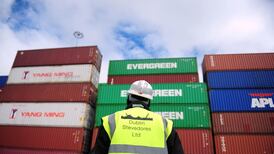The surprising thing about the sort of global tech outage that happened last weekend is that one hadn’t happened sooner, and that they don’t happen more often.
As everybody is now quick to point out, the driving force behind the technological advances of the last couple of decades render us uniquely vulnerable to this type of event. We are hugely dependent in this regard on a small number of products from a small number of companies. If one of these products falls over, the consequences are exponential in nature
On this occasion, the company was Microsoft and the product was Windows, the operating system used by pretty much every organisation of scale in the world. The Butterfly that flapped its wings in the Amazonian rainforest and changed the weather half a world away was a cybersecurity firm called Crowdstrike – a prophetic name if ever there was one – based in Austin, Texas.
Last Friday, Crowdstrike remotely updated software on to its client’s servers. The update caused Windows to become unstable on some systems and the result was chaos across the world as 8.5 million devices running Windows crashed.
READ MORE
It is almost inevitable that something similar will happen again because taking the measures needed to ensure events like this don’t happen is not compatible with our ever-increasing dependence on networks.
If you were one of the thousands stranded and inconvenienced at airports or elsewhere around the globe on Friday and Saturday, you were undoubtedly angry. But it is unlikely that you stopped to consider the fact that the reasons you were at the airport in the first place were probably due to the benefits of the technology that let you down.
Given the scale of the ambition behind the trillion-dollar bet that the industry has made on AI, the consequences of an event similar to the Crowdstrike update could be far more significant and far harder to fix
Without it, you would not have been able to book the flight on the low-cost airline that was delayed because the online check-in system that it uses to cut costs has broken down.
The events of last week will be quickly forgotten – blamed on some fat fingered programmer at a company most people had never heard of.
What it should do – but won’t – is make us more aware of the risk we run and the potential price we might have to pay for a dependence on a networked world.
It is particularly the case as the global technology sector gets set to double down on generative artificial intelligence which it believes will allow it to offer a whole new range of products and services across the technology platforms whose vulnerability was demonstrated over the weekend.
Given the scale of the ambition behind the trillion-dollar bet that the industry has made on AI, the consequences of an event similar to the Crowdstrike update could be far more significant and far harder to fix.
The AI evangelists predict that it will change everything, and we will interact with it in every facet of our lives. Forbes – the US business magazine – predicts that, by 2030, it will be commonplace for humans to have AIs as significant others. AIs will also be “our therapists, our accountants, our lawyers”.
Forbes also predicts that there will be 100,000 “humanoid” robots carrying out tasks “in real-world settings” by 2030. The flip side of this is also acknowledged: “AI-driven job loss will be a concrete and pressing reality in everyday citizens’ lives.”
It all sounds a bit dystopian and more than a little creepy. The good news is that it might not happen.
The best-known “AI bear” is Jim Covello, the head of global equity research at Goldman Sachs. The reason for his scepticism is amazingly simple and relevant in the context of last weekend.
“Replacing low-wage jobs with tremendously costly technology is basically the polar opposite of prior [lucrative] technology transitions,” according to Covello. His argument is that it might just make sense to let people keep doing these jobs because it’s cheaper.
[ Doubts creep in that generative AI can reverse stagnation of western productivityOpens in new window ]
AI infrastructure is extremely expensive to build and consumes vast amounts of energy. The products currently on the market simply do not look like generating the sort of revenues and increases in productivity needed to pay it back.
Everybody seems to be waiting for the development of the “killer app” that will turn this around, but as Tej Parikh wrote recently in the FT, some doubt it ever will.
There are plenty of other reasons to question the hype around AI, but it is already a reality. How big it gets is another question.
Underpinning all the debate seems to be an assumption that these systems will be 100 per cent reliable all of the time and thus we can entrust responsibility for vast parts of our lives to them. Last weekend’s global outage should make us question the wisdom of this assumption.
It is one thing to be stuck at an airport for three hours because of a problem with a cybersecurity update to Microsoft Windows. It would be quite another to lose your significant other because a server went down on the other side of the world.
- Sign up for push alerts and have the best news, analysis and comment delivered directly to your phone
- Join The Irish Times on WhatsApp and stay up to date
- Listen to our Inside Politics podcast for the best political chat and analysis
















